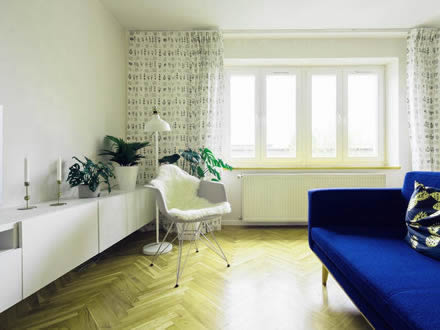Air Conditioning
By far away the most common way of cooling a building is with air conditioning in the form of a HVAC installation, zoned ductless mini-split AC units in each room, window AC or individual portable AC units.
Each method has its pros and cons with regard to budget and economy, convenience, energy consumption and environmental impact. I'll be looking at these aspects as well as the running and needs of this type of cooling solution in this article.
The first thing I should look at however, is what it is and how it works.
What is Air Conditioning?
 This is a device that takes warm air in a room (or the whole house), forces it through a refrigeration process very similar to the way a regular domestic fridge keeps its interior cold by chilling and drying the air, and pumps out the chilled air back into the room.
This is a device that takes warm air in a room (or the whole house), forces it through a refrigeration process very similar to the way a regular domestic fridge keeps its interior cold by chilling and drying the air, and pumps out the chilled air back into the room.
For the more technical minded people reading this, I will direct you to a technical air conditioning manual at the end of this article but for everyone else, I'll refrain from boring you with the complex technical details.
Suffice it to say, an AC is a kind of heat exchange mechanism that converts warm, moist air into cold, dry air inside the building while expelling the resulting hot, moist air out of the building through ducts to external condenser/dryer units. These are the boxes with big fans in them you often see attached to outside walls of buildings.
The venting process is important because so much hot air is created, if it were allowed to simply re-circulate in the room being cooled, the result would be that room actually getting warmer! That's why when you see advertisements for a "portable air conditioner no vent required," they are not telling you the whole truth.
An unvented AC does not exist!
The Costs
The process uses rather a lot of energy to turn hot air into cold. With today's constantly rising energy costs, many people are searching for cheaper but still effective alternatives to keeping their homes cool while staying within their budgets.
The reason AC uses so much electricity is because the refrigeration process employs a large compressor to compress a refrigerant gas which chills when compressed. This is pumped through a lattice of narrow pipes and fins that create a very cold radiating surface that chills the air passed over it.
The external fans also use electricity although far less than the internal mechanisms but it all adds up to several kilowatts of energy being consumed per hour. This can become very expensive to the householder as well as increasing the damage to the environment in higher pollution rates from power stations having to use more fuel to generate the extra electricity to feed the grid.
Are There Low Cost Cooling Alternatives?
There are alternatives to keeping cool, although none really have the same level of effectiveness as air conditioners. The most popular second choice is the evaporative cooling devices often referred to as swamp coolers.
These coolers do not rely on a refrigeration and hot air exhaust process, relying instead on the evaporation of moisture to create cool, moist air that makes us feel cooler and can actually reduce the temperature in a room by several degrees. Since there is no compressor or extraction process, only an internal fan that has the dual purpose of drawing warm air in the back and blowing cool air out the front, the electricity consumption is around 1/20th that of a comparable AC device.
It is portable evaporative coolers that are often mis-described as being "vent-free AC units" since they do not require venting. They are just not air conditioners!
I'll expand on these coolers in a separate article on evaporative coolers. I'll also cover misting fans that use a similar concept but instead of evaporating moisture, they spray a fine mist to create a cooling effect.
Other methods of reducing the ambient indoor temperature involve:
- Shading the building to prevent the hot rays of the sun unduly heating it up
- Using higher rated insulation in walls and attics
- Painting the walls white to better reflect and absorb less heat from the sun
- Open windows during the cool night time hours and closed during the heat of the day
- Creating efficient ventilation with internal fans in rooms and in the attic
- Building homes with very thick walls to create almost cave-like interior climates (this is something you often see in very hot countries)
King of the Coolers
However, no matter what other methods people employ to try and stay cool in summer, there is nothing available that has the sheer cooling power of air conditioning. It comes at an ever rising price in dollar terms as well as environmental, but until a viable, lower cost and more ecologically friendly alternative is devised, we have to keep using the best cooling strategy we have.
External References:
https://airconergy.com
https://energy.gov/energysaver/air-conditioning
https://www.epa.gov/snap/refrigeration-and-air-conditioning
[Back to TOP]